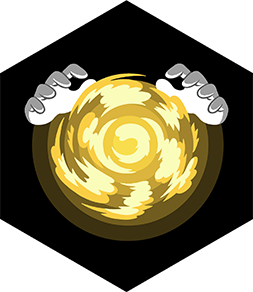Make Magic with Everyday Objects
Create simple "magic" tricks using everyday items like cups, rubber bands, coins, and string to learn observation, sleight of hand, and problem-solving.



Step-by-step guide to Make Magic with Everyday Objects
Step 1
Gather all the materials and put them on a clean table where you can work.
Step 2
Decide you will make the “mystery moving coin” trick with the cups and string.
Step 3
Attach one end of the string to the coin using a small piece of tape so the coin stays connected to the string.
Step 4
Arrange the three plastic cups upside down in a row with a little space between each cup.
Step 5
Slip the coin under the first cup and run the string out so the string is hidden along the table surface.
Step 6
Tuck the loose end of the string under your lap or inside your sleeve so no one can see it.
Step 7
Practice pulling the hidden string gently so the coin slides from under the first cup toward the middle cup while your hands look empty.
Step 8
Hold the small scarf and practice using it for a one- or two-second distraction while you pull the string.
Step 9
Rehearse the full routine slowly: show the cups, wave the scarf as distraction, pull the string, and then lift the right cup to reveal the coin.
Step 10
Perform the trick for a family member and ask them to describe what they saw so you can improve your timing and misdirection.
Step 11
Share a photo or description of your finished magic trick and what you learned on DIY.org
Final steps
You're almost there! Complete all the steps, bring your creation to life, post it, and conquer the challenge!


Help!?
What can we use if we don't have a coin or string for the mystery moving coin trick?
Use a large button, washer, or small plastic bottle cap in place of the coin and swap the string for thin ribbon, dental floss, or sewing thread and attach it with the same small piece of tape as described in Step 3.
The coin won't slide when I pull the hidden string—what should I check?
Check that the tape on the coin from Step 3 isn't bunched up, that the string is lying flat and untwisted along the table as in Step 5, and practice gentle steady pulls in Step 7 to reduce friction so the coin moves smoothly.
How can I adapt the trick for younger children or older kids?
For younger children use bigger plastic cups and a larger substitute coin with a shorter, easily hidden string and adult help tucking it under a lap, while older kids can speed up the scarf misdirection, add a second coin, or perform the full rehearsed routine from Step 9 for an audience.
How can we make the trick more impressive or personalize it before sharing on DIY.org?
Decorate the three plastic cups, choose a bright scarf for stronger misdirection, add a short story during your Step 9 routine, and take a clear photo or video of the reveal to post on DIY.org as suggested in Step 11.
Watch videos on how to Make Magic with Everyday Objects
13 Amazing Magic Tricks with Everyday Objects | Easy Tricks Anyone Can Do!
Facts about magic tricks for kids
🎩 Ancient Egyptian tomb drawings show performers doing simple magic tricks over 4,000 years ago—magic is that old!
🪙 Coins are perfect beginner props because they’re small, weighty, and easy to hide in your hand (a classic move is called palming).
🤹 Practicing a short everyday-object trick builds observation, steady hands, problem-solving, and confidence—plus it’s super fun to amaze friends!
🧵 String games like Cat’s Cradle teach finger dexterity and pattern thinking—great skills for making string illusions.
🥤 The cup-and-ball trick has puzzled audiences for centuries by hiding objects under simple containers while the magician distracts you.
How do I teach my child to make simple magic tricks with cups, rubber bands, coins, and string?
What materials do I need to make magic with everyday objects?
What ages is the 'Make Magic with Everyday Objects' activity suitable for?
What are the benefits of learning simple magic tricks with everyday objects?


One subscription, many ways to play and learn.
Only $6.99 after trial. No credit card required


